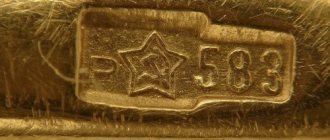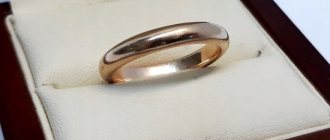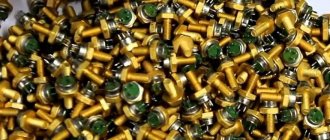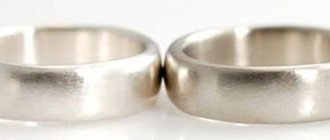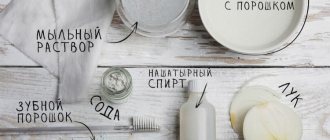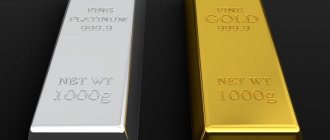A watch with a case or band made of metal such as stainless steel or titanium is quite durable. But they are not as protected from scratches and corrosion as the buyer would like. To improve the appearance of the accessory and make it more durable, brands apply PVD coating. We will tell you the features of the technology, which will help you figure out why it is needed.
Technologies
Today the galvanic method is most often used. The required layer of gold appears under the influence of electrolysis. Anode particles settle on the surface.
People often choose cladding, which results in a layer of gold literally a few microns thick appearing on the surface. But it is absolutely not enough to completely protect the watch from corrosion. In addition, the surface may peel off. So you should think several times before ordering this procedure. But its cost is at a very affordable level. The amount of gold is not distributed evenly. At the same time, for most this will be quite enough.

Jewelry made of tungsten, steel, titanium with IP coating: advantages and disadvantages
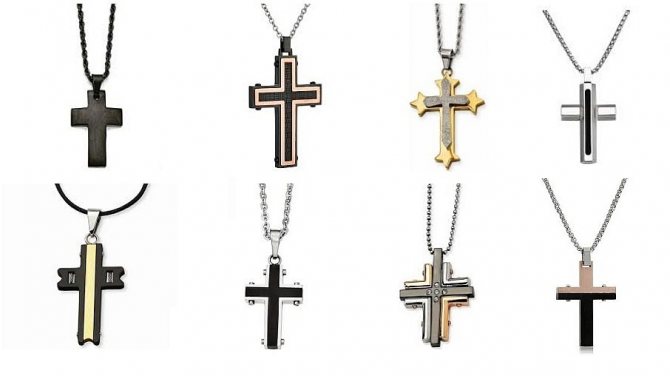
The IP coating method is applicable to almost any metal, but is most often combined with medical steel, titanium and tungsten. It is important to know some features here. Although ionic is one of the strongest and most durable coatings on modern jewelry and is not easily damaged, it is somewhat less scratch and abrasion resistant than heavy-duty alternative metals.
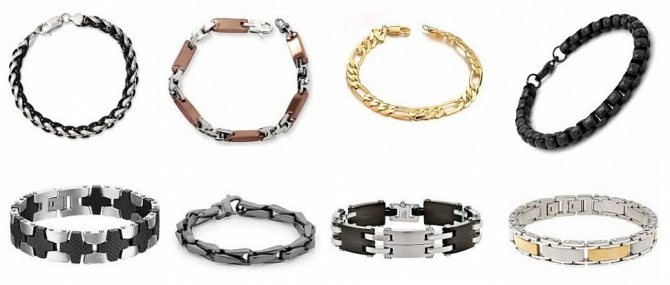
Take, for example, the surface of a pure tungsten carbide ring. It is almost impossible to scratch it. The IP coating on a similar product may be damaged due to careless use and mechanical stress. The slightly less hard titanium and steel also resist scratches more than IP spraying. Moreover, if over time a steel or titanium ring can still become covered with a layer of microscratches, this defect only affects the intensity of the metal’s shine and is easily removed by polishing. Damage to the colored ionic coating cannot be restored using the same method.
At the same time, rings, bracelets and chains marked IP or PVD remain one of the most durable representatives of high-quality costume jewelry in rose, yellow gold and other shades other than metallic. Yes, ionic coating does not last forever, but with careful handling and proper care it can maintain its original condition for many years. For those who want to become the owner of jewelry that does not scratch at all, the ideal option is uncoated products made from tungsten carbide. But the wear resistance of titanium and steel jewelry that is not subject to ion sputtering technology is also at a decent level.

Benefits of gilding
Obviously, when choosing a wristwatch, its gilding plays an important role. Applying gold to the surface of a watch has a number of advantages that will help the accessory highlight its own beauty.
- First of all, the coating process can protect the product from corrosion and the effects of various negative factors.
- Also, applying gilding will give the watch a shine, due to which it will look more impressive on the hand.
- Another important advantage of gold plating is a fairly low fair price, which is fully consistent with the service provided.
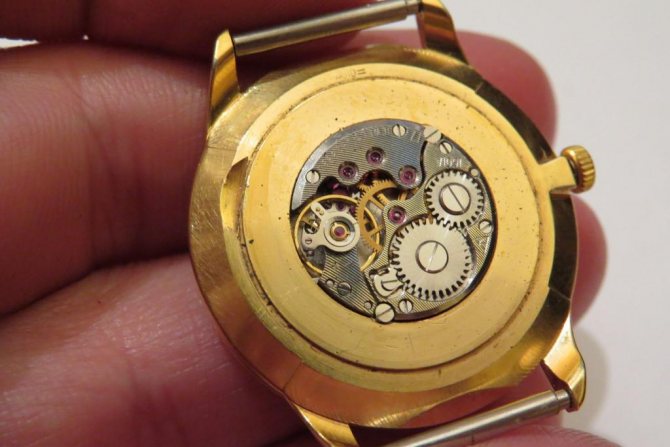
When using the watch for a long time, you may experience that the accessory will lose its original appearance. In this case, it is necessary to resort to gilding. It will update the appearance of your watch, restoring its shine and shine.
Are there any alternatives?
Naturally, technology does not stand still. More and more alternatives are appearing. From the moment PVD coating technology began to be used, the electroplating method began to lose its popularity.
PVD is a method of working with the metal from which the watch case is made, during which atoms of the sprayed metal act on it. Here it is necessary to apply a special protective coating that will allow the layer to remain in place for as long as possible. This is due to the fact that it contains titanium nitrite. Even if the surface wears off a little, it will not be very noticeable.
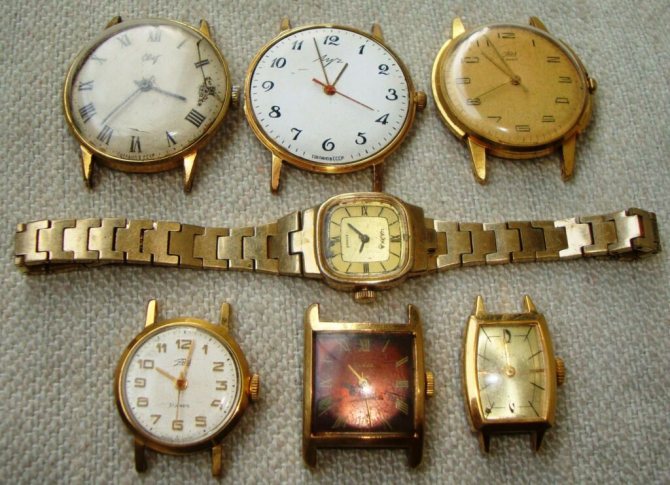
Calculate the price for gilding watches
Entrust gilding of watches in Moscow to professionals! Call +7!
Application of PVD coatings
The coating is very thin in nature, from 0.25 to 5 microns. This spraying forms a protective film on the surface. The hardness of the material is close to sapphire. PVD coating is mainly used to improve the beauty and technical characteristics of watches. In other words, this thin layer not only protects the accessory from rust and wear, but also gives it a more elegant look. Spraying is used by brands such as Casio, Rolex, Victorinox, Tag Heuer, Piaget Altiplano, Shinola, Omega and many others.
The following metals are used for coating: zirconium, titanium, chromium, titanium-aluminum alloys and niobium. As a result, you can achieve a certain color. These can be brass and gold tones, black, gray, chrome, copper and bronze, with both polished smooth and matte options.
Today, a coating called DLC (Diamond like Carbon) is very popular. It is also applied using the PVD method. The properties of carbon plating always depend on who makes or applies it, but it usually consists of a combination of carbon, titanium and nitrogen, which, as its name suggests, increases the durability of the watch to the level of diamonds. By the way, this is exactly what is installed in the Apple Watch 4 Space Black, while the Gold model has a standard PVD coating.
Benefits of coverage:
- Improved attractive appearance;
- Possibility of creating matte and polished surfaces;
- Suitable for tiny, complex parts such as medical devices, watches and tools;
- The thinnest possible coating;
- Resistant to damage caused by salt and other aggressive substances;
- Resistant to scratches and corrosion;
- The coating process is completely environmentally friendly.
How is everything done?
Several different methods are used to apply gold plating to watches. They are determined depending on the accessory being processed, its size and complexity of shape. Methods for gilding watches include:
- Rubbing the surface with a solution of gold chloride. This method is most often used for gilding watches and then applying a pattern or inscription.
- Immersion of the product in a gold solution with a zinc contact. It is used to achieve a thicker layer of gold.
- Galvanic gilding. A special feature of this coating is the ability to achieve a beautiful reddish tint, which gives the watch a unique shine, unlike the iridescence of standard gold and yellow colors.
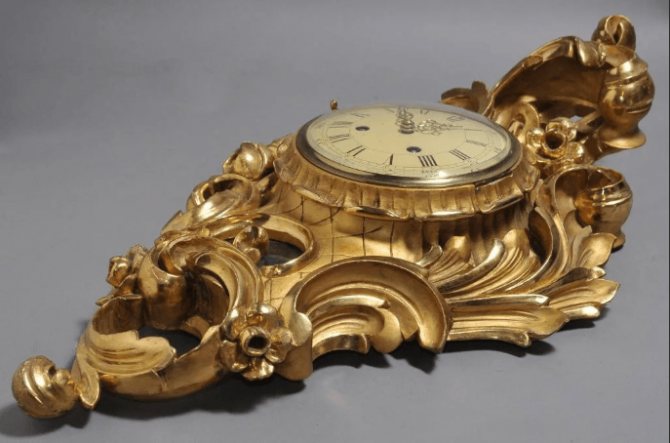
Each of these methods requires special equipment and chemicals. Using any method will provide the watch with a beautiful golden hue for a long time.
When applying gold plating to a watch, the thickness of the coating plays an important role. Typically, when gilding a watch, a layer 5 microns thick is applied. It is optimal as it provides high-quality corrosion protection, long service life and rich color.
When gilding a watch, the work of the craftsman who carries out the order plays a primary role. However, the owner’s attitude towards decoration is no less important. In order for them to continue to perform their functions for as long as possible, you need to remember a few small but important rules. Firstly, you should take off your gold-plated watch both during sleep and water procedures, and during various physical activities and sports. In addition, do not forget that gold is susceptible to sunlight and detergents. With proper care, the watch will be able to serve its owner for a long time without requiring repairs.
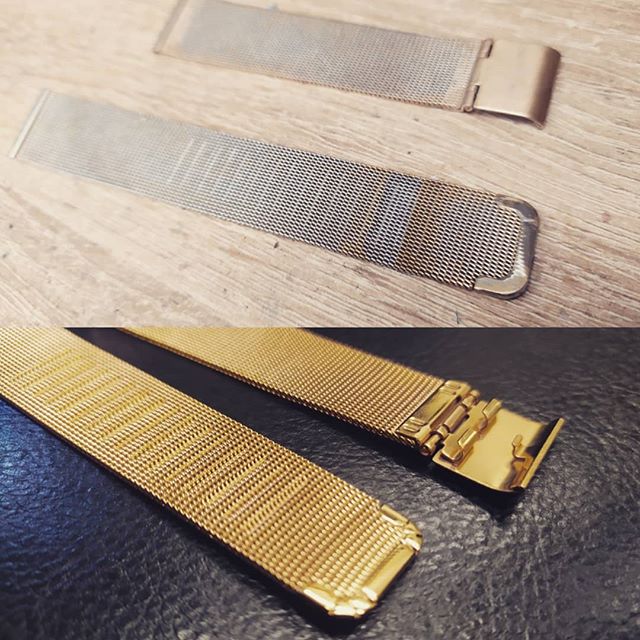
Here it is necessary to adhere to a special technology. Application must only be carried out at high temperatures, high pressure and vacuum. This will allow the gold molecules to bond with the iron molecules. It is imperative to adhere to one important rule. The characteristics of the watch should not change. It is important that everything is done evenly. Otherwise, there is a high chance of cracks forming.
All this will maximize the service life of the watch. In particular, it is up to 15 years. Even many modern technologies cannot give such a result. Gilding can be complete or partial. If the layer thickness is 3-20 microns, then application can be carried out over the entire area of the watch. As for the erasure speed, it averages 1 micron. And then, if you are not particularly careful about the accessory. Often, in order to indicate gilding, the inscription “Au” is made on the end. But you can easily refuse it.
Many people doubt whether it is worth spending money on gilding a watch, but this question is not worth discussing. Most often, people who gilded their watches did not regret their decision, returning to the watchmakers more than once with new orders. Nowadays, it is difficult to imagine a person who does not use a watch. So why not make them as beautiful as possible? The skillful hands of a master can transform a wristwatch by covering it with a pleasant yellow tint.
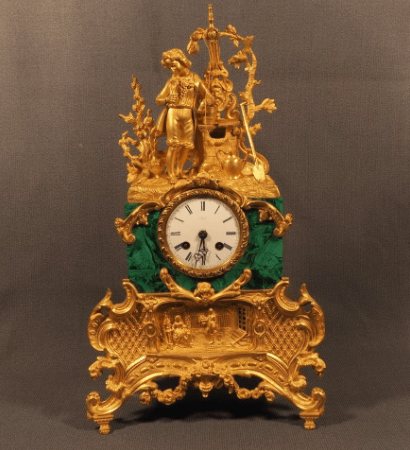
Facts about watch materials: from gold to Kevlar
June 07, 2017
Steel, gold, gilding, titanium, aluminum – the list of materials for watch production is growing longer. This amount of material can even be confusing.
First, a little about terminology: when a person talks about a gold or steel watch, he means the material from which the watch case is made. The strap may be leather, but if the case is made of gold, then it is a gold watch.
A watch is called gold if the case is made of gold, rather than simply having a gold plating or color to match.
Gold is most often yellow in color, but sometimes it can be white or pink (sometimes called red), depending on the metals used in the alloy.
Karat is a unit of measurement of the amount of pure gold in an alloy. The purest gold used to make watches is 18 karat gold. This means that they are 75% pure gold. Some watches are made from 14k gold (58% pure gold). The highest purity rating for gold is 24 karat, which means that the metal is free of any other substance (24 karat gold is never used for watches because it is too soft).
According to generally accepted rules, markings are applied to the back of the case indicating the purity of the gold. If the bracelet is inseparable from the case, markings can be applied to it.
Gold watches cost at least $300, but most are much more expensive. It is logical that 18 karat watches have a higher price than 14 karat watches. If the watch has a gold bracelet, then its value increases significantly.

Among the noble metals, gold is most often used for watch production, and silver is used less often. Platinum is rarely used and is mainly used to create expensive mechanical parts.
Gold plated watches are much more common than gold watches. Their body consists of a base metal (most often brass or steel) coated with a 20 micron thick layer of gold (but most often 10 microns thick or less). One micron is equal to 1/1000 of a millimeter. The gold plating process is called electroplating, which typically uses gold over 18 karats to provide an intense yellow color.
Prices for gold-plated watches range from $50 to $1000 and above.
In recent years, steel has become a popular material for watches. The current fashion trend is white metals. White gold also showed significant growth in sales. The steel used to make watches is called stainless steel, which means that the chromium it contains protects the alloy from corrosion.
Prices for steel watches range from $50 to $1000. Some people are surprised that a watch made from such cheap material can cost so much. However, the metal used for production plays a minor role in the final price - more important factors are the cost of the craftsman’s work and the amount of money spent on the advertising campaign. The exception is watches decorated with diamonds or other precious stones. For such jewelry versions, the cost of materials comes first.
Some watches have gold inserts on the bezel and/or bracelet, used as decorative elements. Steel watches with gold inserts or gilding are called two-tone watches.
Titanium, a durable white metal, has also become popular among manufacturers, reflecting current trends in increasing sales of white watches and sports watches for which the metal is suitable. Titanium is stronger than steel and does not corrode in salt water. However, it scratches quickly, which is why many manufacturers coat titanium watches with a protective material. Titanium is also a lightweight metal, weighing about 40% less than steel.
Some watches are made from aluminum, another white, lightweight, stainless metal.
Less popular materials (such as an alloy of tungsten carbide and titanium, which forms a very hard compound that does not suffer from scratches) are also used in production. The high-tech ceramics used to create space shuttle heat shields are also sometimes used to create watches.
Some manufacturers apply a protective and/or decorative coating to steel or brass watches using the PVD (physical vapor deposition) method. It can be an alternative to electroplating when applying gold, as well as a method of applying wear-resistant titanium nitrite.
Carbon fiber, a lightweight and durable material in black or gray, is a combination of carbon fiber and polymer. Sometimes used to make dials and cases.
Three types of materials are used to produce the clear protective glass that covers the dial. One of them is mineral glass, the same one used in window panels. The second material is acrylic, a clear, hard type of plastic. Acrylic glass is very durable, but scratches easily.
The third option is synthetic sapphire, which is a very hard and scratch-resistant material. Synthetic sapphire is identical to the sapphire used in jewelry, except that it is man-made and completely transparent. Like natural sapphire, it scores 9 out of a possible 10 on the Mohs hardness scale. Diamond, rated 10, is the only harder natural mineral. Synthetic sapphire is also used in the production of displays.
Watch straps (commonly called bracelets if they are made from metal) can be made from a variety of materials. Like the case, bracelets can be made of gold, gold-plated steel, gold-plated brass, steel, titanium or aluminum.
Most often, straps are made of leather. Calfskin is the most common leather for watch straps. Another popular material is kid leather, known as chevreau. Pig and lamb leather is also common for the production of straps.
A group of materials called exotics are usually more expensive than the previous ones and include alligator, crocodile, lizard, ostrich and shark skins. Sometimes calfskin is embossed to make it look exotic. In this case, the strap will be called “lizard-shaped”, “ostrich-shaped”, etc. The words "embossed" and "granular" are also used to emphasize the origin - for example, "embossed crocodile", "granular ostrich".
Many straps are made from synthetic materials such as nylon, plastic, rubber and Kevlar, which is so durable that it is used to make body armor. These materials are especially popular for use on sports watches due to their resistance to wear and tear.
Prices and cost of gilding watches in Moscow
Almost everyone associates gold with an expensive metal, which means that gilding a watch is not the cheapest procedure. However, the cost primarily depends not on the metal itself, but on the requirements that the owner of the watch has.
The area covered is important, as is its shape, as this directly affects the amount of gold required. The thickness of the coating is no less important, because to achieve a smooth, even surface it is necessary to apply several gold-plated layers.
Before applying gold, it is necessary to thoroughly clean the surface of the watch, which is also included in the calculation. Moscow is known for its good professional craftsmen who have many high-quality orders behind them.

There is an opinion that the cost of gilding watches in Moscow exceeds the required amount, but this opinion is certainly wrong. Specially trained craftsmen are ready to provide their services for fair and correctly calculated prices, without demanding overpayment from both Moscow residents and tourists.
Despite this, in order to receive a high-quality product that is ready for long service, it is advisable not to save money and not look for cheap salons. There are quite a large number of salons in Moscow that are ready to provide their services that fully justify the results obtained.
You can find out the estimated cost of gilding a watch using a special form on the website. A simple and user-friendly interface allows you to attach photos or a sketch to the return form and send it to our specialists for review. We will contact you as soon as possible and tell you about the possibility of gilding coins or jewelry.
Features of caring for gold-plated jewelry
If you decide to purchase ready-made watches, rings, bracelets or chains with gold plating or make it at home, you need to know all the nuances of subsequent care for such jewelry.
It is strictly prohibited:
- Immerse products in a damp, salty environment;
- Expose to chemical compounds;
- Clean with abrasive compounds;
- Wipe with rough cloths and sponges.
- Use cleaning methods recommended for silver and gold items.
If you want your jewelry to please you for many years, learn the basic rules for caring for it:
- Wash in soapy water;
- To clean and add shine, you can wipe with a cotton swab and alcohol;
- Then rinse in running water and dry without wiping;
- Using regular beer is very effective: keep the items in it, then rinse with water, and after drying completely, rub with suede.
If you are having a family celebration: prom, wedding, birthday or any other important event, and you are limited on funds, gold plating is an excellent alternative. Remember that a high-quality product must have all the details about the alloy, coating thickness, and stone decorations.
Gold-plated jewelry is in no way inferior in beauty and design to expensive jewelry made from precious metals. With proper care, they will please the eye for many years.


